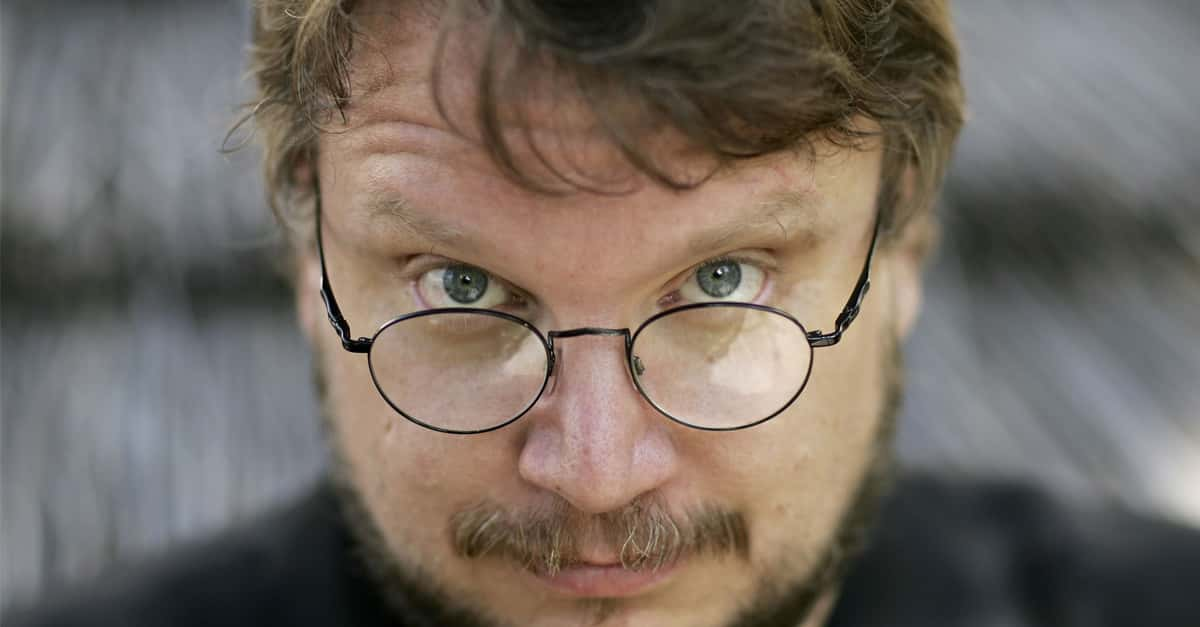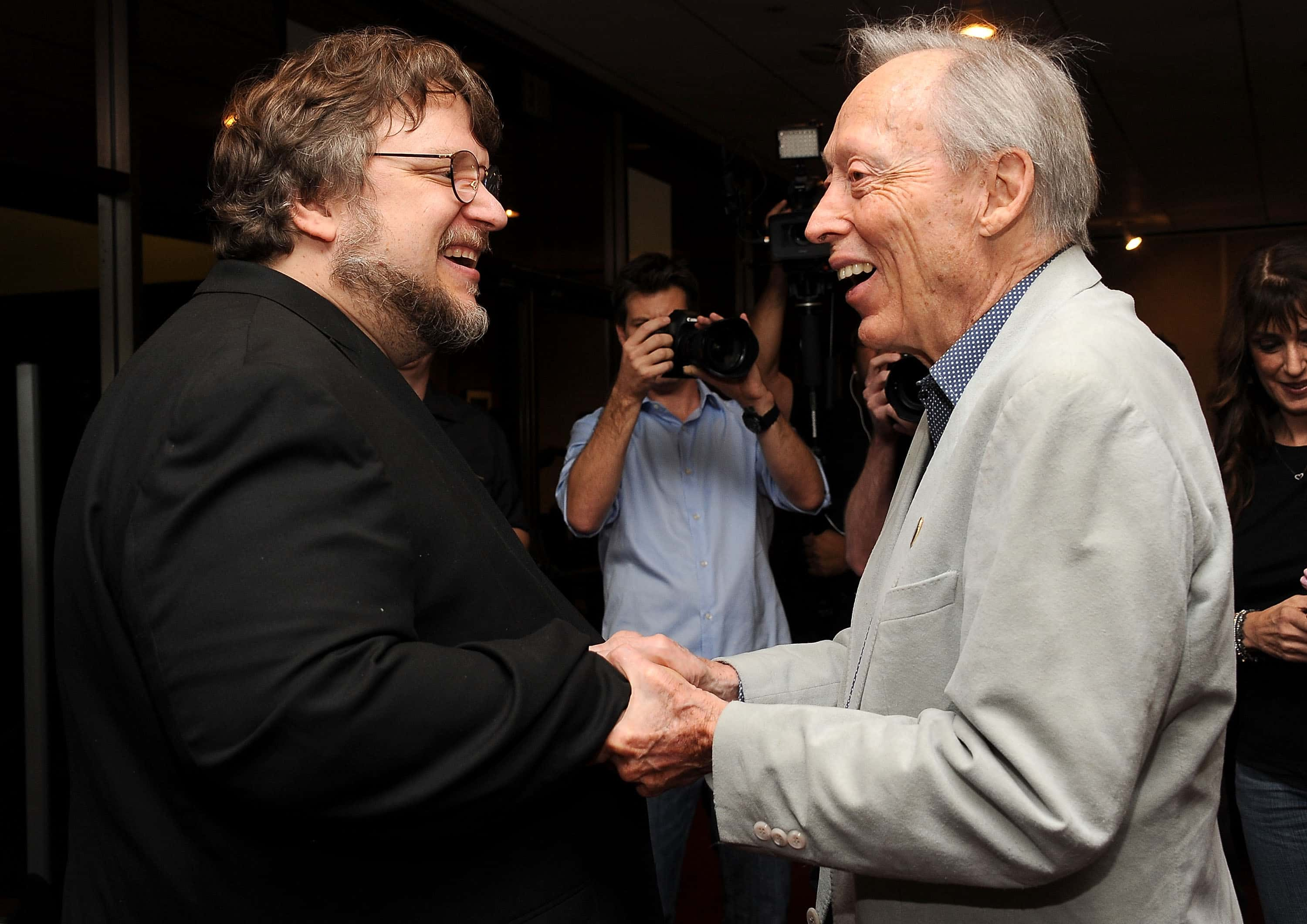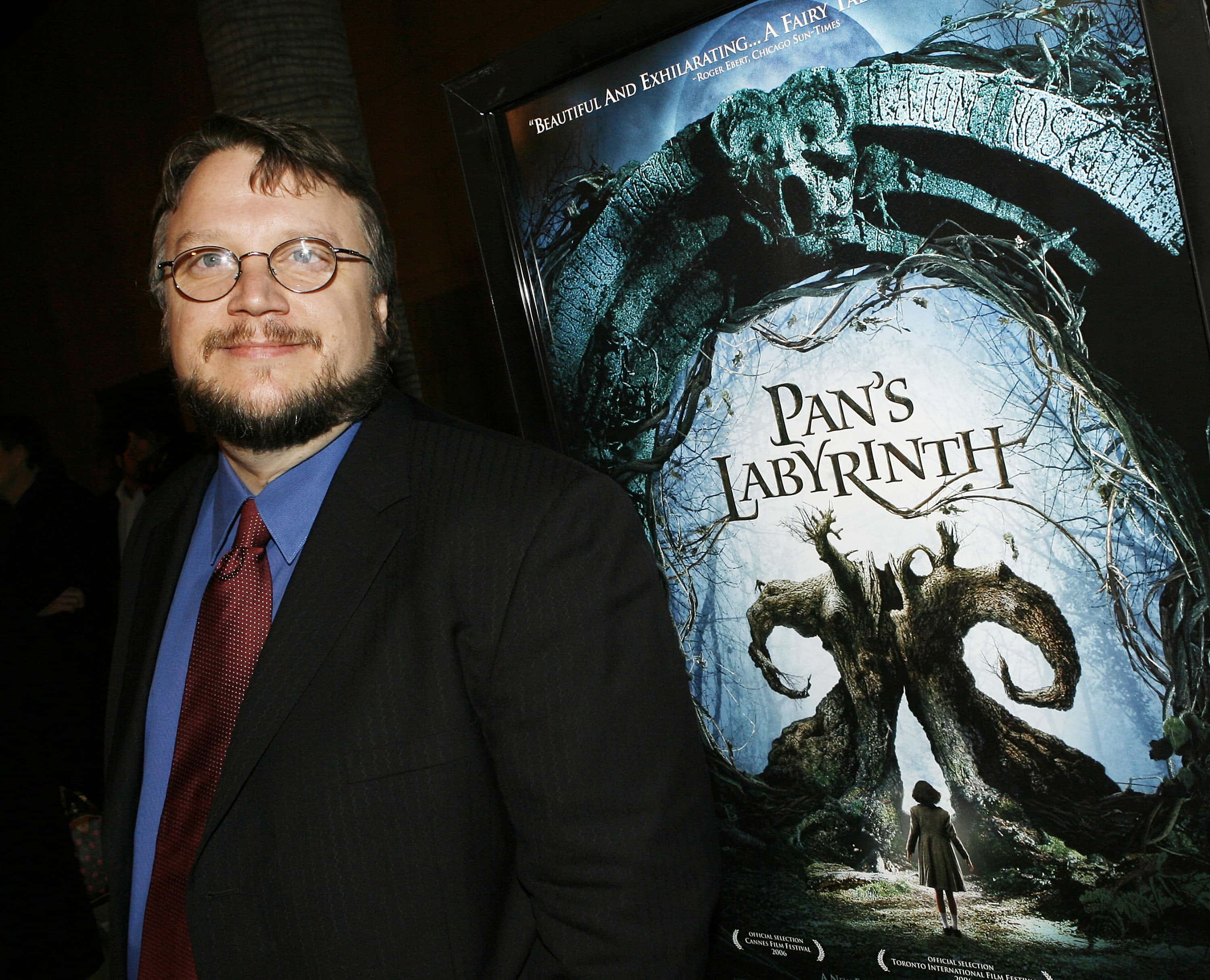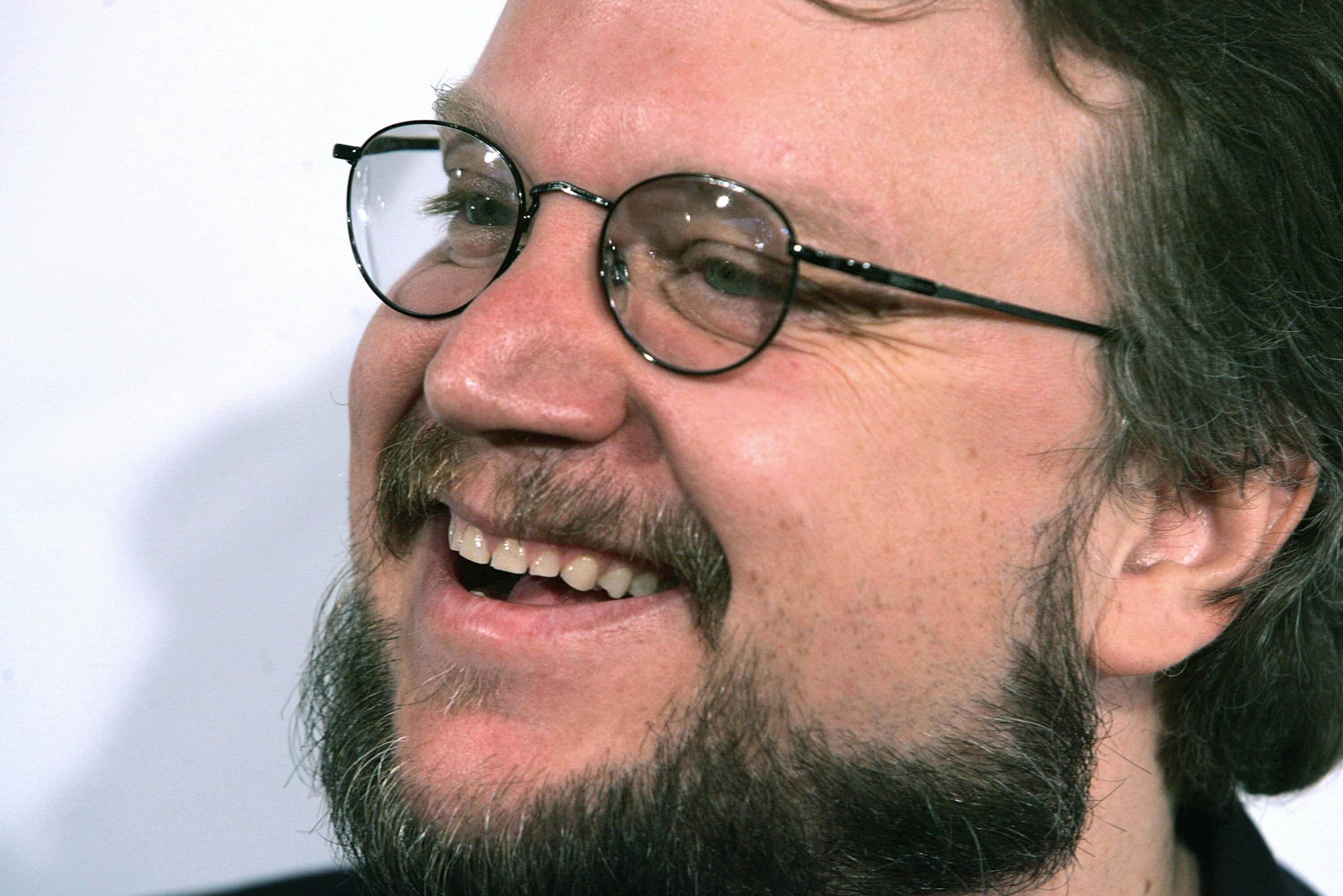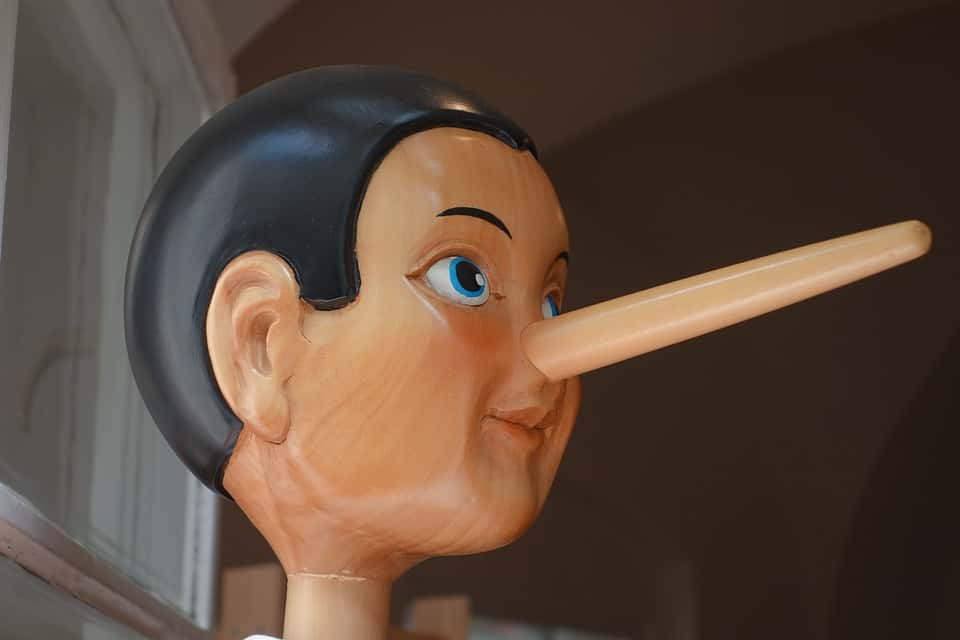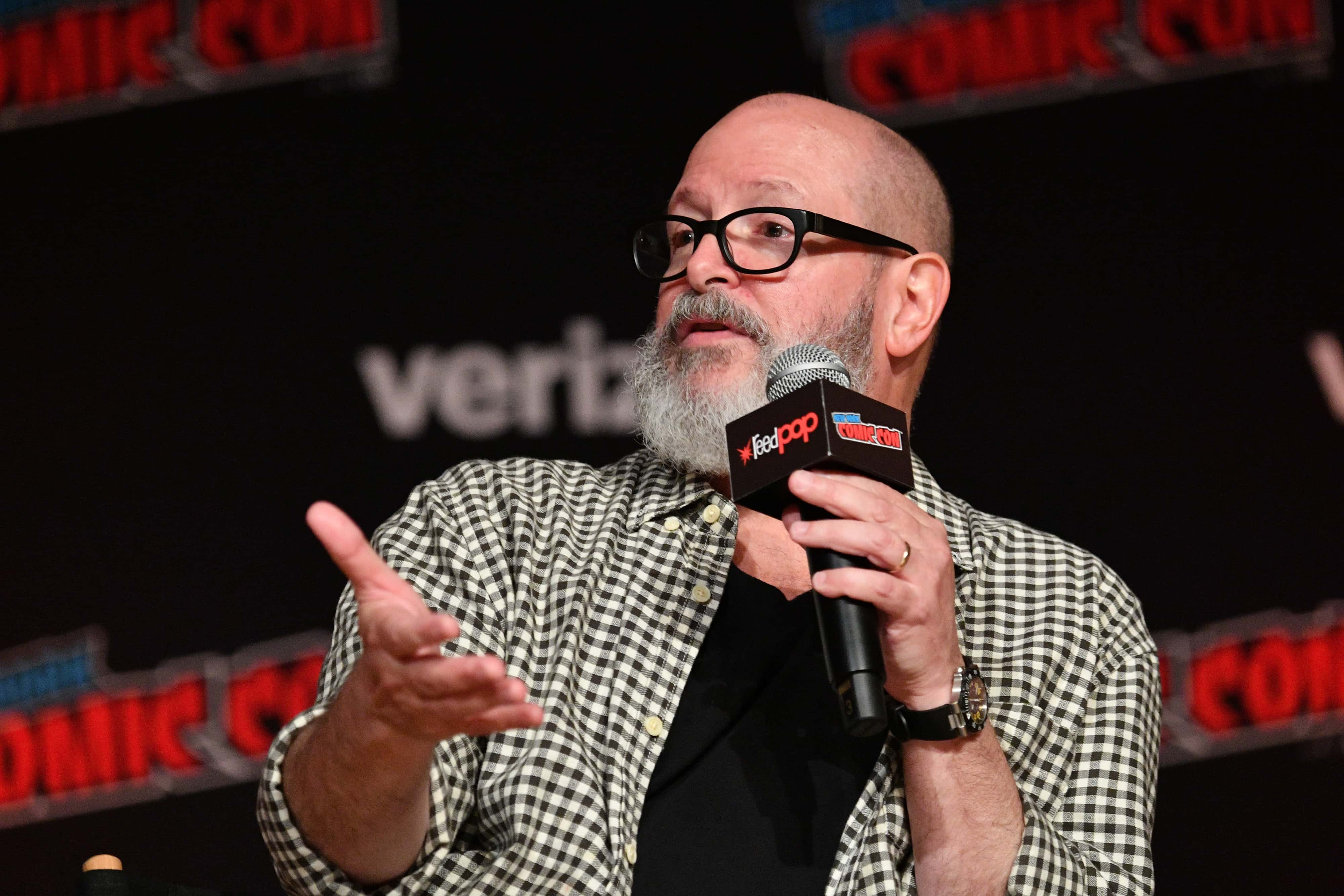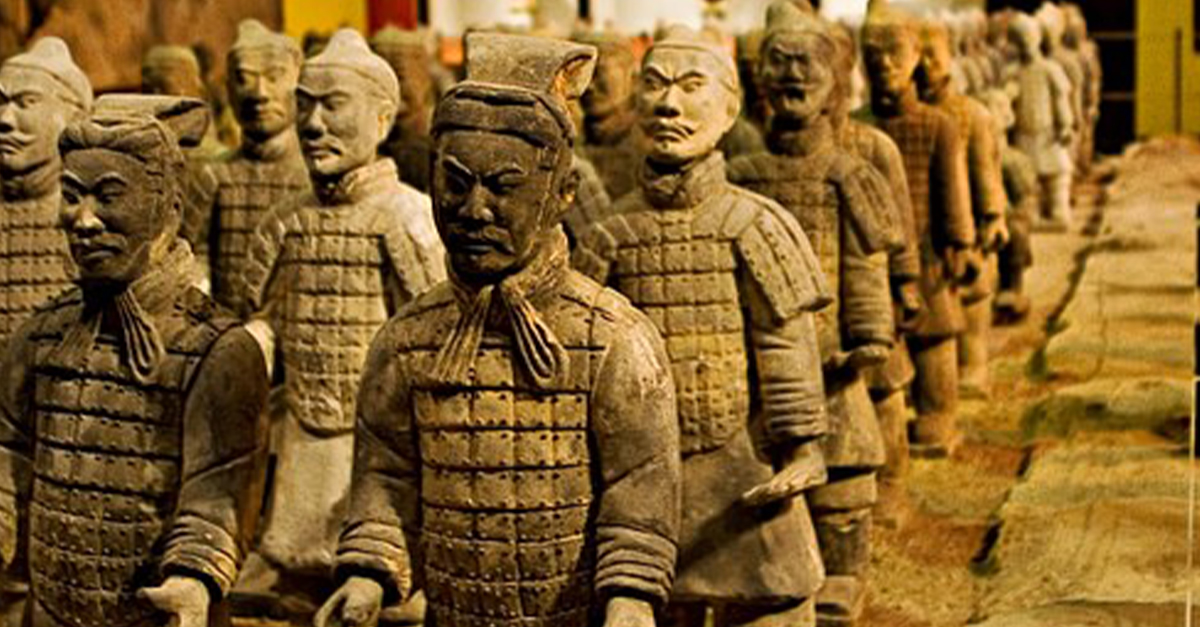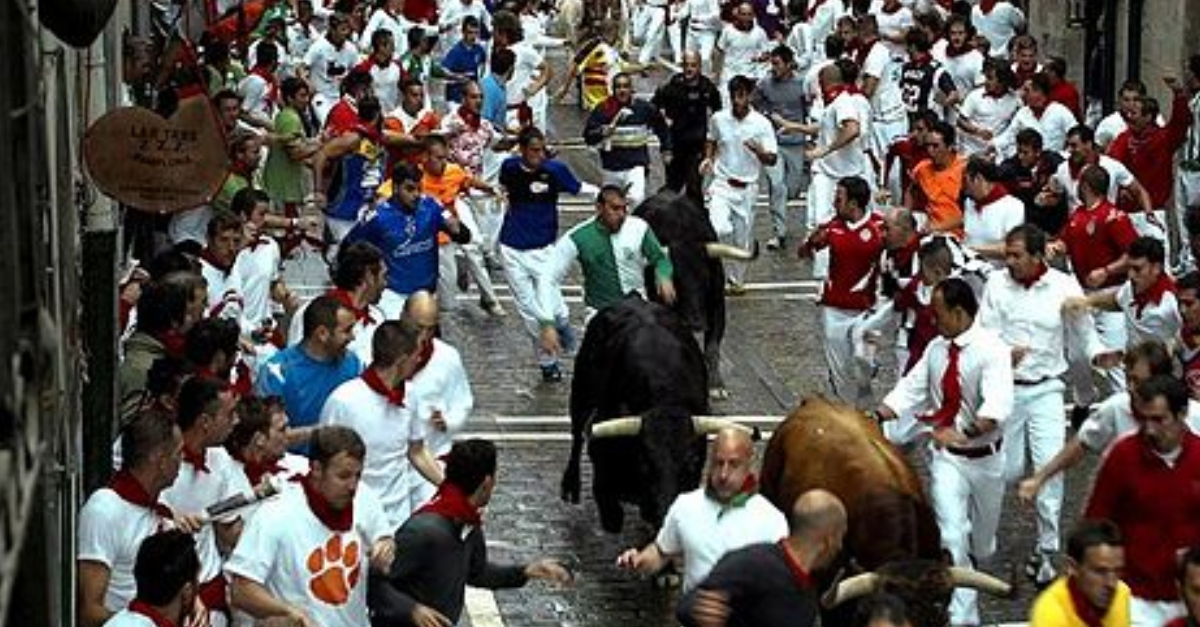“Well, the first thing is that I love monsters. I identify with monsters” —Guillermo del Toro
Guillermo del Toro has built a formidable and fearsome body of work: He is fascinated by the beauty of the unusual, the macabre, and the horrific, and his work has always strived to blur the tenuous distinction between so-called high and low art, earning him legions of fans and critical acclaim in the process. Here are some facts about the life and work of the Mexican maestro.
1. Monster-Mad
Guillermo del Toro’s sincere love of monsters has been embedded in him since he was a small child in Mexico. He claims that monsters used to crowd into his room at night, and he made a pact with them: If they let him go to the washroom, he'd be their friend for life. It worked, and del Toro says, "To this day, monsters are the thing I love most."

2. The Power of Christ Compels You
Del Toro liked monsters so much as a child that his Catholic grandmother, fearing for his soul, performed a real-life exorcism on him, and when that didn’t work, she actually performed a second one. Despite such a strict, religious upbringing, de Toro now considers himself a lapsed Catholic.
3. Prodigy with a Potato
Del Toro started flexing his filmmaking muscles earlier than most, making short films as a child on his father’s Super 8 camera. One short focused on a murderous potato who killed del Toro’s mother and siblings before being venturing outside and being run over by a car.
4. Horrorshow
Del Toro wrote and directed episodes of the cult Mexican anthology series La Hora Marcada. This is how he first met fellow filmmaker Alfonso Cuarón (Y Tu Mamá También, Children of Men, Gravity), who also worked on the show.
5. Make-up Whiz
Before making his first film, Del Toro spent 10 years as a special-effects make-up artist. He founded his own Mexican special effects house, Necropia, with his longtime animation partner Rigo Mora.
6. Friend, Mentor, Legend
Legendary make-up artist Richard Smith had been a huge influence on del Toro throughout his life. He bought Smith’s make-up kit when The Exorcist came out in 1973, and applied for his make-up course in New York in 1987. It was around this time that they met, and Smith soon became a close friend and mentor to del Toro.
7. Light Reading
Del Toro considers himself a book-person first and foremost, and there were two books that shaped his universe as a child. One was an encyclopedia of health (which led to an obsession with anatomy), and the other an encyclopedia of art.
8. My Pal Perlman
Best known for his portrayal of the title character in 2004’s Hellboy and its 2008 sequel, Hellboy II: The Golden Army, Ron Perlman has starred in five of the director’s films in total. Their first collaboration was 1993’s vampire drama Cronos, del Toro’s debut feature.
9. Not a Bad Start
Cronos received widespread acclaim and award recognition, including eight Ariel Awards from the Mexican Academy of Film.
 Cronos (1993), Instituto Mexicano de Cinematografía
Cronos (1993), Instituto Mexicano de Cinematografía
10. High-Profile Rewrites
After turning in a draft of his screenplay for Mimic to Miramax, the studio was not happy with how little was explained about the creatures at the centre of the story, and decided to commission a number of rewrites. One of these drafts was written by none other than Steven Soderbergh, but almost none of his work ended up in the film.
11. Second Unit = Second Rate
Del Toro is not a fan of second unit work, and for his director’s cut of Mimic he managed to excise the majority of the second unit footage. Robert Rodriguez was one of the second unit directors on the film.
12. Real-Life Horror
During the production of Mimic, del Toro's father was kidnapped from Guadalajara, Mexico, and held to ransom for 72 days. The kidnappers wanted $1 million for his safe return, but del Toro had put all of the money he had into Mimic. Things were looking dire until his good friend James Cameron stepped up and paid the ransom.
13. The Weinsteins Were Worse
Mimic was a very troubled production, and del Toro claims that his experience butting heads with studio execs at Miramax was actually more traumatic than his father’s kidnapping: "What was happening to me and the movie was far more illogical than kidnapping, which is brutal, but at least there are rules."
14. Involuntary Exile
After the ordeal of his father’s kidnapping, del Toro felt that he could never go back to Mexico: “Every day, every week, something happens that reminds me that I am in involuntary exile.”
15. Almodovar the Great
Del Toro’s third film, 2001’s The Devil’s Backbone, was produced by renowned Spanish filmmaker Pedro Almodovar. Almodovar afforded del Toro a level of creative freedom that he’d never experienced up to that point, and the eternally grateful del Toro has tried to pay this gesture forward as a producer for many directors’ films.
16. Double Feature
Del Toro considers The Devil’s Backbone and Pan’s Labyrinth to be companion pieces, and claims that they reveal "symmetries and reflections" if watched together.
17. A Nighttime Visit
The inspiration for the faun in Pan’s Labyrinth came to del Toro through a lucid dream he used to have as a child, where he would wake up at midnight and see a large faun emerge from behind his grandfather clock.
18. Superior Subtitling
Unsatisfied with the way they were handled for The Devil's Backbone, del Toro did the English subtitles for Pan’s Labyrinth together with a friend and an assistant.
19. Jones Takes Centre Stage
A former contortionist and mime, Doug Jones has embodied a diverse array of characters in six of del Toro’s features (including the Pale Man and the Faun from Pan’s Labyrinth). 2017’s The Shape of Water sees Jones in his first lead role as a fish-man in a government lab in the early ’60s who falls in love with Sally Hawkins’ mute cleaning lady.
20. No Hablo Español
Jones was del Toro’s first and only choice to play the faun in Pan’s Labyrinth, even though the character spoke entirely in Spanish and Jones was not a Spanish speaker. Jones spent a long time learning Spanish for the role, only to eventually be dubbed over by a native Spanish speaker for the final cut.
21. Del Toro’s Bibles
Del Toro has always kept sacrosanct journals crammed with ideas and sketches that often make their way into his films in some form or another. He showcased many of these in a 2013 book entitled Cabinet of Curiosities: My Notebooks, Collections, and Other Obsessions.
22. Crisis Averted
In the mid-00s, del Toro accidentally left one of his notebooks in the back seat of a London taxi. When the driver tracked down del Toro’s hotel and returned the notebook to him two days later, the overwhelmed filmmaker gave him a tip of approximately $900. The journal had contained four years worth of sketches and notes, much of which formed the basis for Pan’s Labyrinth, and del Toro took its return as a sign and began making the movie right away.
23. United We Stand
Del Toro’s monster movie Pacific Rim was not just a glorious ode to the kaiju cinema and mecha anime that he loved as a child, it was also intended to act as an anti-jingoistic beacon of togetherness and cultural harmony. He has said “the idea of the movie is just for us to trust each other, to cross over barriers of color, [gender], beliefs, whatever, and just stick together."
24. The House That Guillermo Built
The stunning haunted house at the centre of de Toro’s film Crimson Peak is the real star of the show, and every detail of it was built from the ground up and designed by del Toro and production designer Tom Sanders. Every piece is original and intended to invoke the history of the characters; nothing was made from reused or salvaged parts.
 Crimson Peak (2015), Legendary Entertainment
Crimson Peak (2015), Legendary Entertainment
25. Nightmare Fuel
The grotesque, petrifying scarlet ghosts in Crimson Peak were actually brought to life by actors in full prosthetics, and enhanced with CGI.
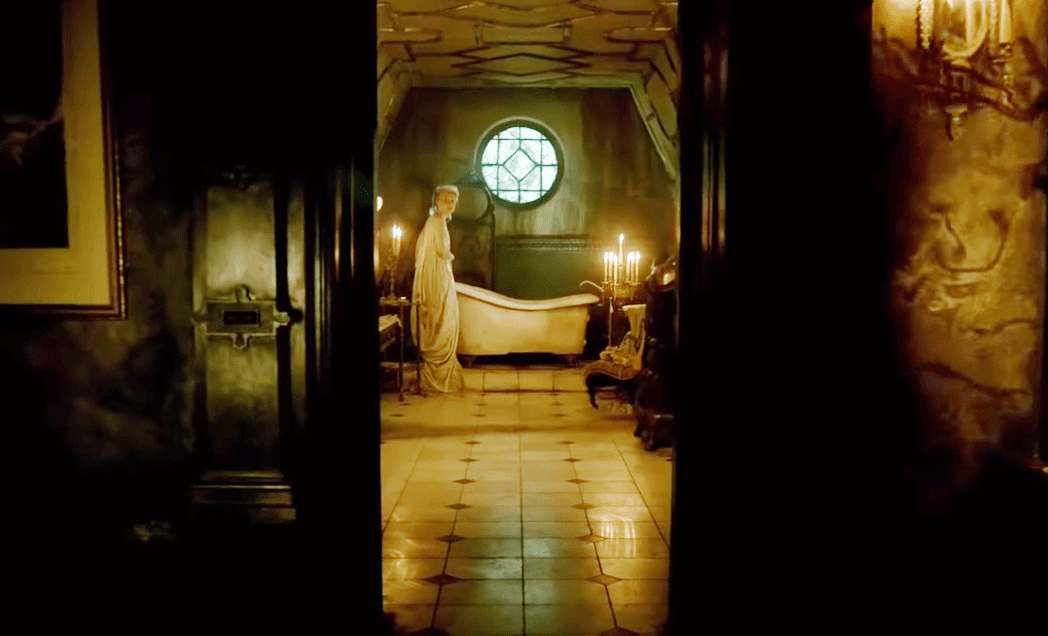 Crimson Peak (2015), Legendary Entertainment
Crimson Peak (2015), Legendary Entertainment
26. Living Metaphors
Del Toro is fascinated by insects because of their alien nature and complete lack of empathy, and refers to them as “living metaphors.” The characters in Crimson Peak were explicitly intended to represent certain insects: “Edith is the fragile butterfly of daylight, and Lucille a powerful, ugly moth of the dark.”
27. Politically-Charged Chills
He considers the horror genre to be inherently political, and claims horror, like fairy tales, can be delineated into two ideological categories: “One is pro-institution, which is the most reprehensible type of fairy tale: Don’t wander into the woods, and always obey your parents. The other type of fairy tale is completely anarchic and anti-establishment.”
28. Horror Maestro
Despite his profound love for the genre, del Toro does not strictly consider himself a horror filmmaker. Instead, he describes his movies as “fables that have the beauty and aesthetics of the horror movie.”
29. The Desolation of del Toro
Del Toro was originally set to direct The Hobbit series, but left the project due to continued delays and unreasonable time commitments. It was not an easy decision, and at the time he cited it as the most difficult situation of his life. He is still credited as a co-writer for each film.
30. The Role of a Lifetime
A big fan of It’s Always Sunny in Philadelphia, del Toro has appeared on the show as the delightfully insane Pappy McPoyle. Sunny star Charlie Day offered him the part after the two worked together on Pacific Rim.
31.Far-Left
Politically, del Toro has described himself as “a little too liberal.” Most of the villains in his movies share authoritarian traits.
32. Simpsons Did It
He directed the opening couch gag for the Simpsons’ “Treehouse of Horror XXIV,” and crammed it full of references to his own work and classic horror films.
 The Simpsons, 20th Century Fox Television
The Simpsons, 20th Century Fox Television
33. Producer of Note
Though mostly celebrated for his work as a director, del Toro is also a prolific producer. His producing credits include The Orphanage (2007), Biutiful (2010), Kung Fu Panda 2 (2011), and Puss in Boots (2011).
34. Sincerity Is Key
As a storyteller, del Toro rejects irony and never likes to put himself above his subjects. “I’m out of step with the culture a little bit," he says. “I’m never ironic, I’m never postmodern, ever. I’m always earnest.”
35. Bleak House
Del Toro owns and maintains a home containing numerous books, props, replicas, costumes, posters, and other items pertaining to his work and influences. He named it “Bleak House” (after the Charles Dickens novel), and it has been on view as a temporary exhibition at several museums.
36. A Darker Pinnochio
Del Toro’s career is almost as noteworthy for his unrealized projects as it is for those that get completed. Among them is his long-gestating stop-motion Pinnochio adaptation, which he recently announced wouldn’t be happening due to lack of funding. Unsurprisingly, the project would have been a darker, more complex take on the classic children’s story, focussing on ascension of Mussolini and Fascism in early 20th century Italy.
37. Regretfully Yours
Del Toro was offered creative control over Universal’s Monster Universe reboot, but he turned it down. He cites this as one of the few things in his career that he regrets not doing.
38. Pining for Potter
Something else he deeply regrets is turning down the opportunity to direct Harry Potter and the Prisoner of Azkaban, which he was offered before his friend Alfonso Cuarón took up the mantle.
39. The Hellboy That Never Was
According to Ron Perlman, the third instalment in del Toro’s Hellboy series would’ve seen the titular hero as a beast of the apocalypse who “has to take down civilization” in order to save humanity, and it would’ve introduced the character’s twin children.
40. He Made Mignola Happy
The original Hellboy creator, Mike Mignola, has stated that he was "very happy" with del Toro’s Hellboy movies.
41. The Author is God
Del Toro’s first official foray into fiction writing was his collaboration with Chuck Hogan on a trilogy of vampire novels, titled The Strain.
42. Master Craftsmen
Del Toro plans to take a year-long sabbatical from directing in 2018, during which he intends to carry out interviews with filmmakers Michael Mann and George Miller, each over two weeks, to discuss their craft.
43. A Fantastic Future Ahead
One of del Toro’s most intriguing potential future projects is his remake of 1966’s Fantastic Voyage, about a miniaturized team of scientists who inject themselves into the bloodstream of a colleague who is dying of a blood clot. Originally due to begin pre-production in early 2018 but put on hiatus due to del Toro’s planned sabbatical, the project is said to use the same 3D technology James Cameron used for Avatar.
Sources: 1, 2, 3, 4, 5, 6, 7, 8, 9, 10, 11, 12, 13, 14, 15, 16, 17, 18, 19, 20, 21, 22, 23, 24, 25, 26, 27, 28, 27, 29, 30, 31, 32

